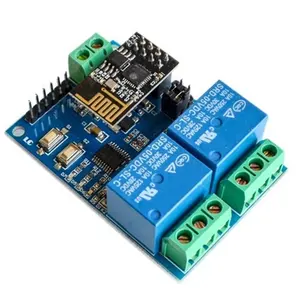
5V ESP8266 ESP-01 2 Channel WiFi Relay Module 2 Channel Relay Module For IOT Smart Home Phone APP Controller



















A buzzer relay is an electromechanical device that integrates a buzzer within a relay system. This component serves a critical role in various applications by emitting an audible signal when the relay is activated. The integration of a buzzer with a relay allows for immediate auditory feedback, which is essential in systems requiring prompt attention or indicating the status of an operation.
Buzzer relays come in different forms, including the flasher relay with buzzer and the relay and buzzer configurations. These variations cater to specific needs, such as the flasher relay with buzzer, which is commonly used in automotive turn signal applications. The materials used in the construction of buzzer relays include durable plastics and ABS, ensuring longevity and reliability in various environments.
The applications of buzzer relays are diverse, ranging from automotive systems to industrial machinery. For instance, the audible towbar buzzer relay wiring is a critical safety component in vehicles, providing an audible alert when a towbar is in use. In industrial settings, devices like the tem1a audible monitor rely on buzzer relays to monitor conditions and alert personnel to specific events or changes in the system.
Buzzer relays offer several features that make them advantageous for use in various systems. They are designed to be compact and efficient, allowing for easy integration into existing circuits without requiring significant modifications. The warning buzzer relay is particularly beneficial in safety-critical applications, where it provides a clear and distinct sound to warn operators of potential issues.
Selecting the appropriate buzzer relay for a specific application involves considering factors such as voltage requirements, sound level, and the type of signal needed. For example, the 111951307a model is a specific type of buzzer relay designed for certain applications, and its specifications must align with the system's requirements. Similarly, the teb7as buzzer is another variant that may be suitable for different applications, highlighting the importance of understanding the nuances of each type.
When incorporating a relay buzzer circuit into a system, it is crucial to understand the electrical characteristics and wiring requirements. A relay buzzer circuit typically includes the relay itself, the buzzer component, and the necessary wiring to connect to the power source and control mechanism. Proper integration ensures the buzzer relay operates as intended, providing a reliable and effective auditory signal.